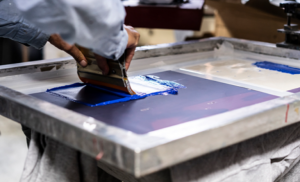Exploring MDF Wood and Its Many Benefits

When it comes to woodworking and furniture design, choosing the right material is crucial. Medium Density Fiberboard (MDF) is one such material that has gained popularity for its versatility and affordability. In this blog post, we will take an in-depth look at MDF wood, its uses, and its benefits. Whether you’re a DIY enthusiast or a professional carpenter, this guide will help you understand why MDF might be the perfect choice for your next project.
What is MDF Wood?
MDF stands for Medium Density Fiberboard. It is an engineered wood product made by breaking down hardwood or softwood residuals into wood fibers, combining it with wax and a resin binder, and forming panels by applying high temperature and pressure. This process creates a dense, flat, and smooth surface that is ideal for various woodworking projects.
The Manufacturing Process
The creation of MDF involves several steps. First, wood chips are broken down into fibers. These fibers are then mixed with resin and wax to form a slurry. This mixture is then pressed and heated to form panels. The result is a stable, smooth, and consistent material that can be used in numerous applications.
Difference Between MDF and Other Engineered Woods
MDF is often compared to other engineered wood products like plywood and particleboard. While plywood is made from thin layers of wood veneer, MDF consists of fine wood fibers. This gives MDF a smoother finish, making it ideal for painted surfaces. Unlike particleboard, which can be rough and uneven, MDF provides a uniform texture that is perfect for detailed work.
Environmental Considerations
One of the advantages of MDF is its eco-friendliness. It is made from recycled wood fibers, reducing the need for raw timber. Additionally, advancements in manufacturing processes have led to low-emission MDF products, which are better for indoor air quality.
Uses of MDF Wood
Furniture Making
MDF is widely used in the furniture industry due to its smooth surface and ease of machining. It can be found in everything from cabinets and shelves to tables and chairs. Its consistent texture allows for precise cuts and intricate designs, making it a favorite among woodworkers.
Cabinetry
Cabinets require materials that are both sturdy and aesthetically pleasing. MDF fits the bill perfectly. It is easy to paint and can be finished to resemble more expensive woods, offering a cost-effective alternative without compromising on appearance.
Interior Design
In interior design, MDF is often used for decorative elements like moldings, baseboards, and wall panels. Its smooth surface is perfect for painting, allowing designers to create custom looks that elevate any space.
Benefits of MDF Wood
Affordability
One of the main reasons people choose MDF is its affordability. Compared to solid wood, MDF is significantly cheaper, making it an excellent choice for budget-conscious projects. It offers the look of real wood without the hefty price tag.
Versatility
MDF’s versatility is another major benefit. It can be easily cut, shaped, and painted, making it suitable for a wide range of applications. Whether you’re building furniture, creating cabinetry, or designing interior decor, MDF can be adapted to meet your needs.
Durability
Despite being an affordable option, MDF is surprisingly durable. It doesn’t warp or crack like solid wood, making it a reliable choice for long-lasting projects. Its density also provides a stable base for screws and fasteners, ensuring your creations are sturdy and secure.
Easy to Work With
Smooth Surface
One of the standout features of MDF is its smooth surface. This makes it an ideal material for painted finishes. Unlike other woods that may have knots or grain patterns, MDF provides a uniform texture that results in a flawless finish.
Consistent Density
MDF’s consistent density makes it easy to machine. Whether you’re cutting, drilling, or routing, you can achieve precise results without worrying about inconsistencies. This is particularly important for detailed work and intricate designs.
Minimal Waste
When working with MDF, you can maximize the use of each panel, resulting in minimal waste. This not only saves money but also contributes to more sustainable woodworking practices. Plus, any leftover MDF can be recycled for future use.
Ideal for Custom Projects
Customizable
MDF is highly customizable, making it perfect for bespoke projects. From custom furniture pieces to unique interior designs, MDF can be tailored to fit specific requirements. Its adaptability allows for endless creative possibilities.
Paint-Friendly
If you’re planning to paint your project, MDF is the way to go. Its smooth surface requires minimal preparation, and the paint adheres beautifully, resulting in a professional-looking finish. You can easily achieve any color or style you desire.
Compatibility with Other Materials
MDF works well with other materials, such as veneers and laminates. This allows you to combine different textures and finishes, adding depth and interest to your projects. Whether you want a sleek modern look or a classic woodgrain finish, MDF can accommodate your vision.
Cost-Effective Solution
Budget-Friendly
MDF is a cost-effective alternative to solid wood. It offers similar aesthetic qualities at a fraction of the price. This makes it an attractive option for both DIY enthusiasts and professional woodworkers who want to achieve high-quality results without breaking the bank.
Efficient Use of Resources
The manufacturing process of MDF utilizes wood fibers that would otherwise go to waste. This efficient use of resources makes MDF an environmentally responsible choice. By choosing MDF, you’re not only saving money but also supporting sustainable practices.
Long-Lasting
Despite its affordability, MDF is built to last. Its durability ensures that your projects will stand the test of time, providing excellent value for money. Investing in MDF means investing in quality without overspending.
Safe and Environmentally Friendly
Low Formaldehyde Options
Advancements in manufacturing have led to the development of low formaldehyde MDF products. These options are safer for indoor use, reducing the risk of harmful emissions. Look for certified low-emission MDF to ensure a healthier environment.
Recyclable
MDF is recyclable, making it an eco-friendly choice. When your project reaches the end of its life cycle, you can recycle the MDF components, reducing waste and conserving resources. Choosing MDF supports a circular economy.
Sustainable Sourcing
Many MDF manufacturers prioritize sustainable sourcing practices. By using responsibly sourced wood fibers and adhering to environmental regulations, they contribute to the preservation of forests and natural habitats.
Limitations of MDF Wood
Moisture Sensitivity
While MDF is durable, it is not as moisture-resistant as solid wood. Prolonged exposure to water can cause MDF to swell and lose its shape. For projects in humid or wet environments, consider using moisture-resistant MDF or sealing the surface with a waterproof finish.
Weight
MDF is denser and heavier than other engineered wood products. This can make it more challenging to handle and transport, especially for larger panels. Ensure you have the necessary tools and assistance when working with MDF to avoid strain or injury.
Limited Grain Patterns
Unlike natural wood, MDF does not have a grain pattern. While this provides a smooth surface for painting, it may not be suitable for projects that require a natural wood appearance. Veneers or laminates can be applied to MDF to achieve the desired look.
Choosing the Right MDF
Standard MDF
Standard MDF is suitable for most general woodworking projects. It offers a smooth surface and consistent density, making it versatile and easy to work with. This type of MDF is ideal for furniture, cabinetry, and interior decor.
Moisture-Resistant MDF
For projects in humid or wet environments, moisture-resistant MDF is the better choice. It is specially treated to withstand moisture exposure, reducing the risk of swelling and warping. Use moisture-resistant MDF for bathroom vanities, kitchen cabinets, and outdoor furniture.
Fire-Retardant MDF
Fire-retardant MDF is designed for applications that require enhanced fire safety. It is treated with fire-resistant chemicals to slow the spread of flames. This type of MDF is commonly used in commercial buildings, public spaces, and high-risk areas.
Conclusion
Medium Density Fiberboard (MDF) is a versatile and cost-effective material that offers numerous benefits for woodworking and furniture design. Its smooth surface, consistent density, and affordability make it an excellent choice for a wide range of projects. Whether you’re building custom furniture, creating cabinetry, or designing interior decor, MDF provides the reliability and versatility you need.
By understanding the uses and benefits of MDF, you can make informed decisions for your next woodworking project. Remember to choose the right type of MDF for your specific needs, and take advantage of its customizable and paint-friendly nature.
Ready to start your next project with MDF? Explore our range of MDF products and discover the possibilities today!






